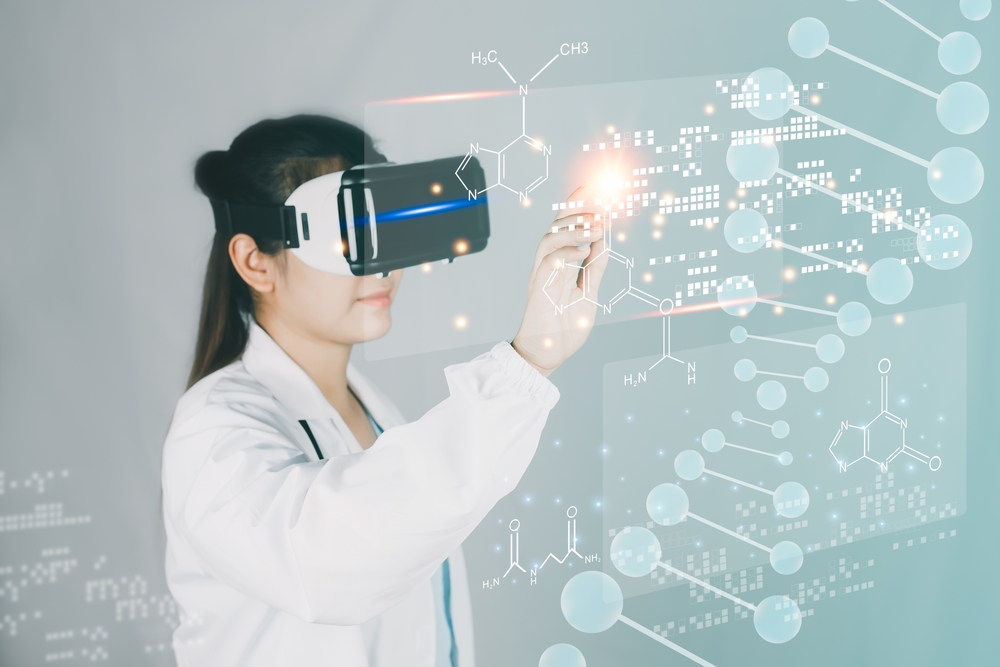Introduction: The Imperative Role of Technological Advancements in Healthcare and Medicine
In the contemporary landscape, characterized by escalating global health challenges such as the proliferation of chronic diseases, the emergence of pandemics, and disparities in healthcare access, the significance of technology within the medical sphere has ascended to an unprecedented level of importance. These technological innovations are not merely instrumental in enhancing the quality of life for the current populace but also pivotal in unlocking novel therapeutic and preventative avenues for future generations. This article aims to analyze the impact of contemporary medical and health technologies in fostering sustainable development.
Global Health Challenges in the Context of Technological Evolution
Presently, the global community grapples with formidable health challenges, encompassing pandemics, the burden of chronic illnesses, demographic shifts towards an aging society, and inequities in healthcare provision. Digital innovations, encompassing telemedicine, artificial intelligence, and cutting-edge diagnostic techniques, present unprecedented opportunities to address these challenges. These technologies facilitate expedited diagnostic processes, enhance treatment efficacy, and extend healthcare accessibility to even the most geographically isolated regions. Medical software, underpinned by machine learning algorithms and artificial intelligence, has emerged as an indispensable asset in both diagnostic and therapeutic realms, enabling a more profound comprehension and management of diseases. The era necessitates the formation of interdisciplinary teams comprising physicians, designers, programmers, and bioengineers, collaborating on solutions that demand a comprehensive, integrative knowledge base beyond the scope of any single discipline. In this context, the synergy of collaborative efforts and the amalgamation of diverse knowledge bases are paramount.
The Design and Comprehension of Health Technologies
The design of health technologies necessitates a conscientious consideration of the needs of diverse societal segments, including future generations. Medical innovations, such as genetic engineering, biotechnology, and nanotechnology, harbor the potential to revolutionize both disease prevention and treatment modalities. A nuanced understanding of the genetic and environmental etiologies of diseases enables the formulation of more targeted therapeutic interventions and pharmaceuticals.
Technology’s Intersection with Sustainable Development in Medicine
The United Nations’ Agenda 2030 underscores the criticality of health in the pursuit of sustainable development. In this vein, medical technologies are integral in actualizing objectives such as enhanced health and well-being. The digitization of healthcare systems, advancements in diagnostic and therapeutic technologies, and innovations in patient data management collectively contribute to the augmentation of healthcare efficiency.These technological strides are instrumental in facilitating more effective health status monitoring at the population level, a crucial aspect in disease prevention and the promotion of healthier lifestyles.
Mental Health and the Integration of Digital Technologies
The importance of mental health is tantamount to that of physical health, and the advent of digital technologies has opened new vistas for its support and treatment. Recent years have witnessed a burgeoning awareness of mental health’s significance, catalyzing an increased demand for innovative digital solutions in this domain. Digital products, including meditation applications, stress management tools, online therapeutic platforms, and mental health support applications, have gained substantial traction. These technologies proffer accessible avenues to resources and support, which are vital for individuals grappling with mood disorders, anxiety, depression, and other mental health challenges. For instance, mobile applications can assist in mood monitoring, sleep pattern tracking, and the promotion of relaxation practices. Furthermore, teletherapy – therapy facilitated through digital platforms – extends the reach of professional psychological support to individuals who might otherwise face barriers to traditional therapeutic modalities due to geographical, temporal, or financial constraints.
Artificial intelligence and machine learning are increasingly being deployed in the mental health sector, for instance, through the analysis of data from applications and social media to preemptively identify indicators of depression and other disorders. While technology cannot supplant the intrinsic value of direct therapist-patient interactions, it serves as a valuable adjunct to conventional treatment methodologies and can play a critical role in the prevention and management of mental health issues. The broader implementation of these technologies necessitates a responsible approach, encompassing stringent data privacy and security measures, along with continuous efficacy monitoring. Collaborative endeavors among mental health professionals, software developers, and end-users are essential in the creation of technological solutions that are not only at the forefront of innovation but also effective and secure in application.
Conclusions: Envisioning Technology as a Catalyst for a Healthier Future
The realm of technological innovation in medicine harbors immense potential to elevate the quality of life and health standards globally. Its judicious application and development can pave the way for more sustainable, efficient healthcare systems, benefiting both present and future generations. The quest for a healthier future is contingent not only on investments in novel technologies but also on the commitment to health education and international collaborative efforts in the medical field. International cooperation and knowledge exchange are imperative in the development and implementation of innovations capable of yielding global benefits.
autor: Martyna Mrozek, Head of Product Design Cshark, European Women’s Association
***
WOMEN IN IT DAY 2023
THANK YOU FOR BEING WITH US:
MAIN PARTNER: PKO Bank Polski, Centralny Ośrodek Informatyki, Accenture, BNP Paribas Bank Polska, Orange, Point72, PwC, Totalizator Sportowy, GPW, SimCorp HONORARY PATRONAGE: Ministry of Family and Social Policy, Ministry of Digital Affairs, KIGEIT National Chamber of Commerce for Electronics and Telecommunications, POLSA Polish Space Agency, SGH Warsaw School of Economics SUBSTANTIVE PARTNER: HR Hints, flexi.pl, Jolanta Kwaśniewska’s Agreement Without Barriers Foundation, Blockchain Poland Association, IAESTE International Association for the Exchange of Students for Technical Experience, Bring Women Back to Work, Youth Human Impact, Women in Medicine Foundation, CCIFP French-Polish Chamber of Commerce, Challenge Rocket com, THINK! Knowledge Society Development Foundation, Lewiatan Confederation, Challenge Rocket, Think, Hack Yeah, MMC Polska, FOB Responsible Business Forum, She Skillz Global, Polish Chamber of Information Technology and Telecommunications PIIT, Businesswomen Leaders Foundation, Cyber Women Community, Cyber Clue, OPI Information Processing Center, Success Written in Lipstick, Share the Care Foundation, DATA Economy Congress, SoDA Software Development Association Poland, NESsT, Stress-Free Institute, Fin Tech, Eklektika – Language Means Business, Talenti, No Fluff Jobs, IT Girls, True ME MEDIA PATRONAGE: BusinessWoman&life, Comparic.pl, Polish Wallet, reach4.biz, TVP Bydgoszcz, Biotechnologia.pl, Mamo Pracuj, Polska Sky, BiznesTuba, Fintek, Przedsiębiorcy.eu, IT Poland technology cluster, di24.pl, AIoAi THE 5TH EDITION OF WOMEN IN IT DAY IS PART OF THE ERASMUS+ PROGRAM IN COOPERATION WITH: Future Collars, DIGITALEUROPE, European Women’s Association






